Perhaps the worst pandemic in human history was the infamous
Black Death—the Bubonic Plague—that ravaged the whole world in the Fourteenth
Century. Travel, record-keeping, and accurate diagnoses were not fully reliable
in those days, but some estimates have the death rate in Europe between 30% and
60%. I guess I had learned about this event through the years…school, History
Channel, that sort of thing.
What I hadn't really learned much about was a far more
recent—and surprisingly comparable to COVID-19—pandemic in 1919, often called
the Spanish Flu. Between early 1918 and the fall of 1919, something like
675,000 Americans died of influenza, and perhaps 20-40 million died worldwide.
This scourge killed more people than the recently ended World War.
Sadly, and amazingly, I never really knew much about this
pandemic. I mean, I had heard the term "Spanish Flu" before, but I never really
thought it was that serious. However, once I went down the rabbit hole of
looking into some of the consequences, I found the parallels to today to be quite
remarkable. One thing we do know for sure is that the Spanish Flu was a global
disaster. It was a human disaster, a financial disaster, it destroyed
governments, and for many it changed life as they had known it before. Keep in
mind, the population of the United States was quite a bit smaller a hundred
years ago (approximately 105 million people) and the record keeping was likely less
accurate. Deaths were probably significantly higher than the records show. So,
somewhere around 0.64% to 1.00% of all Americans apparently died because of the
Spanish Flu. According to Worldometer, there have been approximately 722,268
deaths in the U.S. from COVID-19 out of a total population of around 330
million people, or approximately 0.24%.
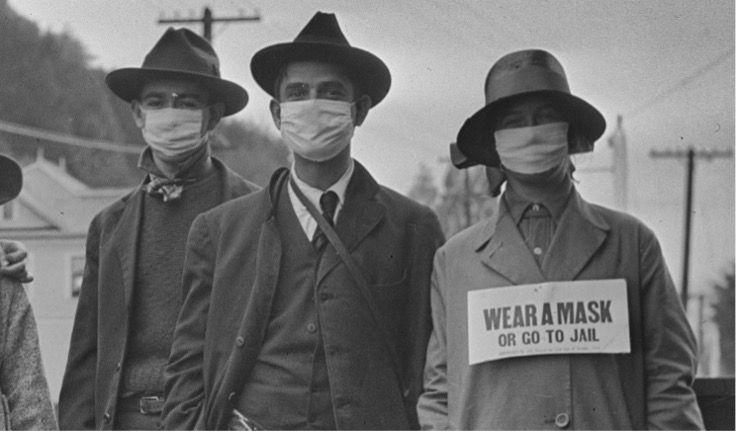
Why do I bring up such a grim history? First, let us
consider the phases I discussed last week: panic, adaption and masking, testing
and vaccines, political wrangling, and finally, treatment. I tried to make the
argument that we have entered the treatment phase and promised to try to tie it
into the capital markets. Let's see if I can pull that off!
The Spanish Flu caused a panic as younger people, mostly those
between 20-40 years of age, were dying at an incredibly alarming rate. So, Phase
One: Panic.
I hadn't known that masks had ever been a thing in this
country. Upon reflection, it makes sense though, because no one I know was alive
in 1919. The oldest people in the country would have been mere babes at the time.
If you look up images from the time frame, however, you will see images of
people wearing masks. So, Phase Two 2: Masking and Adaptation.
Unfortunately, for that generation, Phase Three: Testing and
Vaccines, did not occur. People got sick, went to hospitals where they were
often turned away due to lack of capacity, and then they either got better or they
passed away.
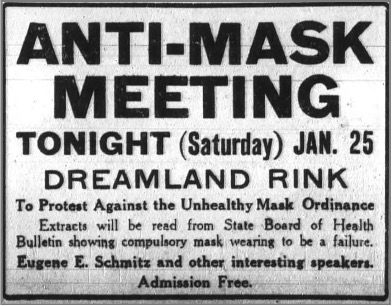
They did, however, nonetheless enter my Phase Four: Political
Wrangling.
While researching for this post, I found many interesting articles.
There were lots of fights, rallies, and even the occasional shooting related to
local mask mandates and other types of lockdowns. Reading some of these was
almost like watching the news of today. People were angry and scared.
Businesses were dramatically affected.
It appears to me through my readings that the wrangling was much more of
a local issue than the national one it is today. Obviously, news did not travel
as fast as it does today—no Twitter, no internet—and the reach of the Federal
government into most individual's lives was far shorter. As they say, politics
is local, and that was definitely true in the late 1910s!
I also don't think they ever really experienced a phase of
treatment, like we are entering now. The disease just burned itself out. As I
noted earlier, the record keeping was not as good a century back as it is
today, but there are reasonable general records, and I want to put two graphs
together side by side. These graphs show
the waves of both the 1919 pandemic and the current one. We are still
experiencing the 3rd wave of COVID today, but if you squint as these
two…pretty similar.
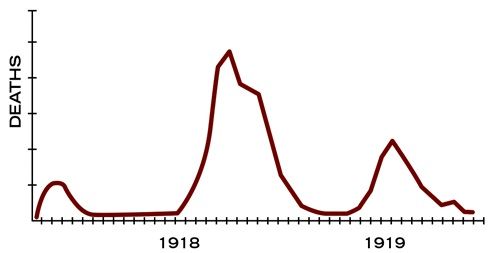
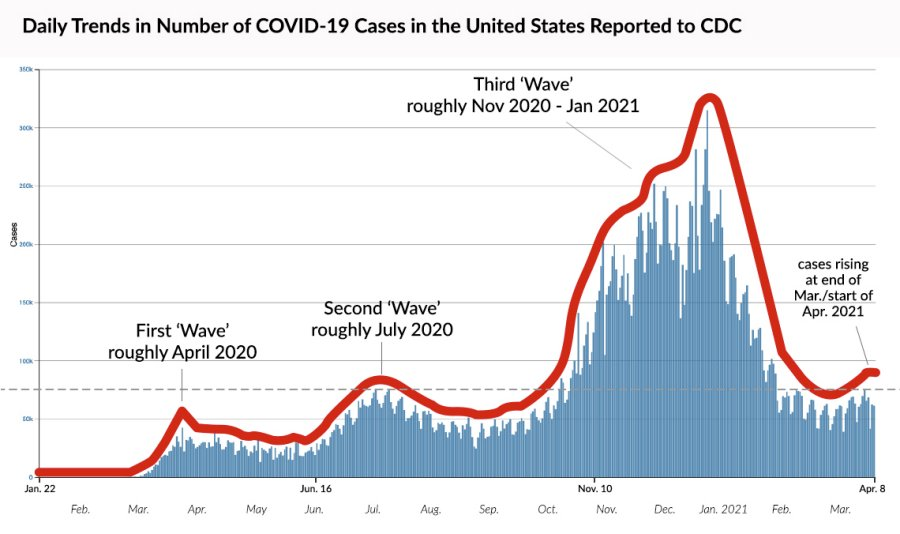
Please note that I am not a scientist, nor am I a credible
pandemic expert, but to the layman's eye….
Now I promised to get to the financial implications
I am
going to reach and suggest that the similarity of the above wave graphs could
suggest some similarities in the aftermaths of these episodes, financially.
These are only observations, do not rely on them too much!
The graph below, shows us the stock market from 1915 to
1935. The Dow-Jones kind of bounced around 100 during the entire pandemic.
After it's resolution, the market skyrocketed, and people got to really enjoy
the famous Roaring Twenties. I cannot say that the end of the pandemic was 100%
responsible for this incredible roaring market, but I believe most historians
would say it was at last partially responsible.
Unfortunately, due to massive leverage, virtually zero risk management,
and bad decision making, the Roaring Twenties ultimately led to the Great Depression,
which you can also see in this graph. The stock market fell from around 350 to
42 over the course of three years, leading to incredible wealth destruction.
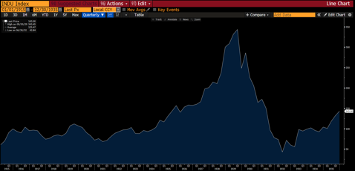
There are other potentially disturbing parallels. During the
1910s the average inflation rate was somewhere in the 3% range. Due to a
massive increase in the money supply, by the end of the 1920s it was around
15.5%. The country was also experiencing all kinds of new technology. The
common use of electricity, the automobile, radio, production lines in factories,
commercial flight! Lots of cool stuff.
What might this mean for us today? I have no real idea. I do
see inflation coming on strong. Oil prices are higher than they have been in
years. Our money supply is expanding at an astounding pace. The velocity of
money is at or near a 60-year low. People are not working, many comfortably,
because they can get paid for staying at home. Even with all the technological
advances we have seen, we still can't know the future. I really think managing
a portfolio of assets must become ever more dynamic. I've beaten this drum
1,000 times (I'd say 1,000,000, but I don't want to exaggerate), but we must
look at our investments over time and across multiple scenarios. Relying on
single statistic parameters is more dangerous than ever.
Even with all the technological advances we have seen, we still can't know the future. I really think managing a portfolio of assets must become ever more dynamic. I've beaten this drum 1,000 times (I'd say 1,000,000, but I don't want to exaggerate), but we must look at our investments over time and across multiple scenarios. Relying on single statistic parameters is more dangerous than ever.
I also do see tons of cool new technology: electric cars, incredible
computer stuff, documents that can be executed electronically. Communications
today have been transformed from even two years ago. Many people are perfectly content to do their
work from home, via Zoom and Slack. The world has changed, just as it did over a
hundred years ago.
As Mark Twain famously said: "History doesn't repeat itself,
but it often rhymes."
Mark Twain died in 1910…just sayin'.
Final, final
thought: Halloween is around the
corner…any good ideas on treats I should give out? Or on treats I should keep
for myself?
Fill out the form below to subscribe to my weekly blog.
The information, analysis, guidance and opinions expressed herein are
for general and educational purposes only and are not intended to constitute
legal, tax, securities or investment advice or a recommended course of action
in any given situation. Information obtained from third party resources are
believed to be reliable but not guaranteed. All opinions and views constitute
our judgments as of the date of writing and are subject to change at any time
without notice.


